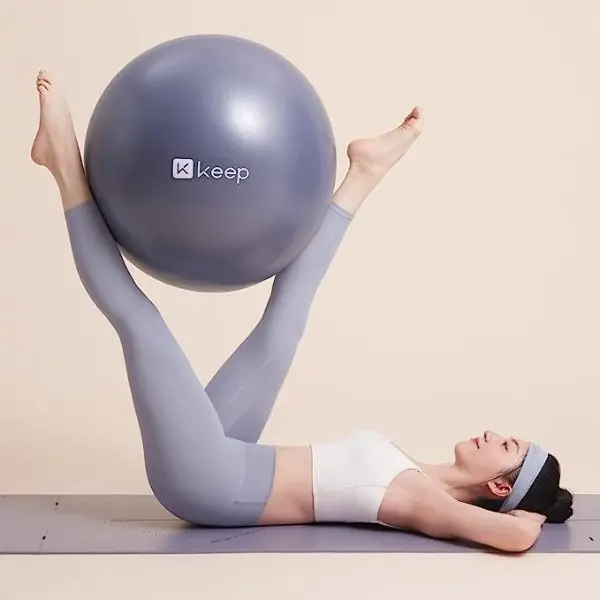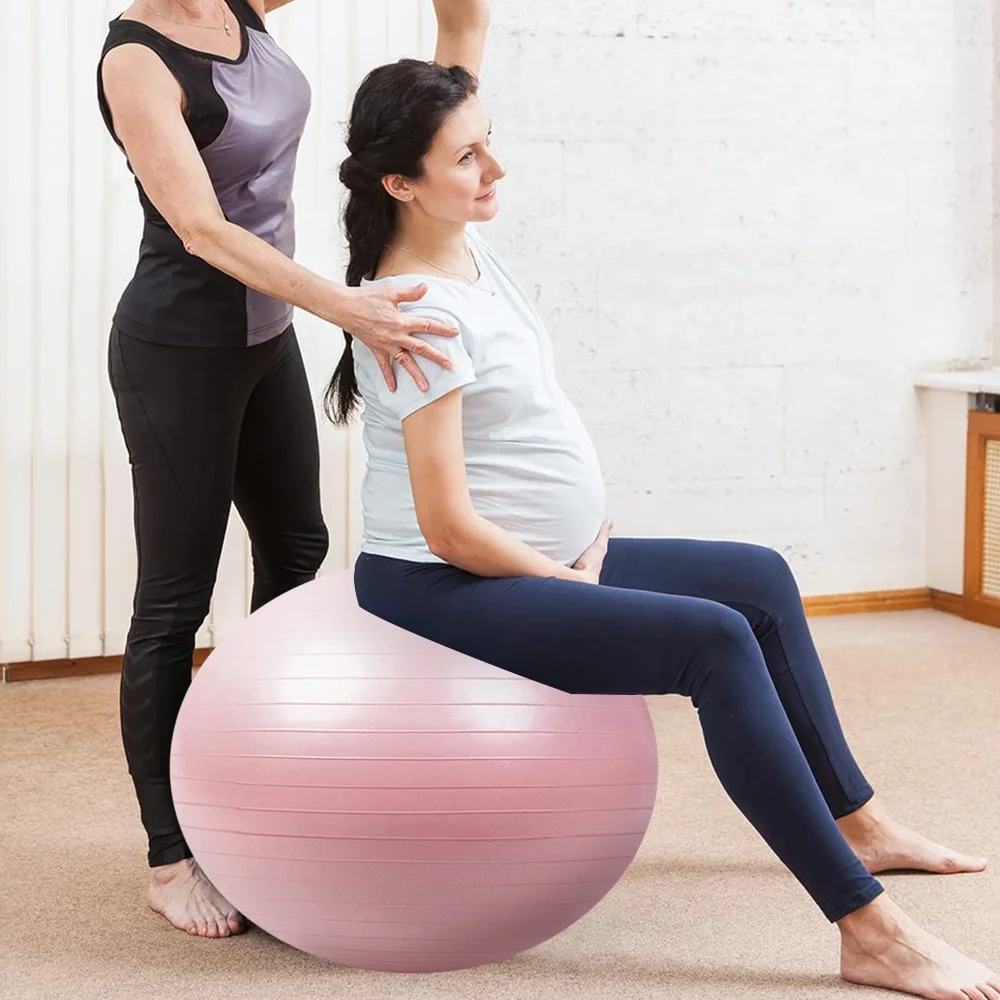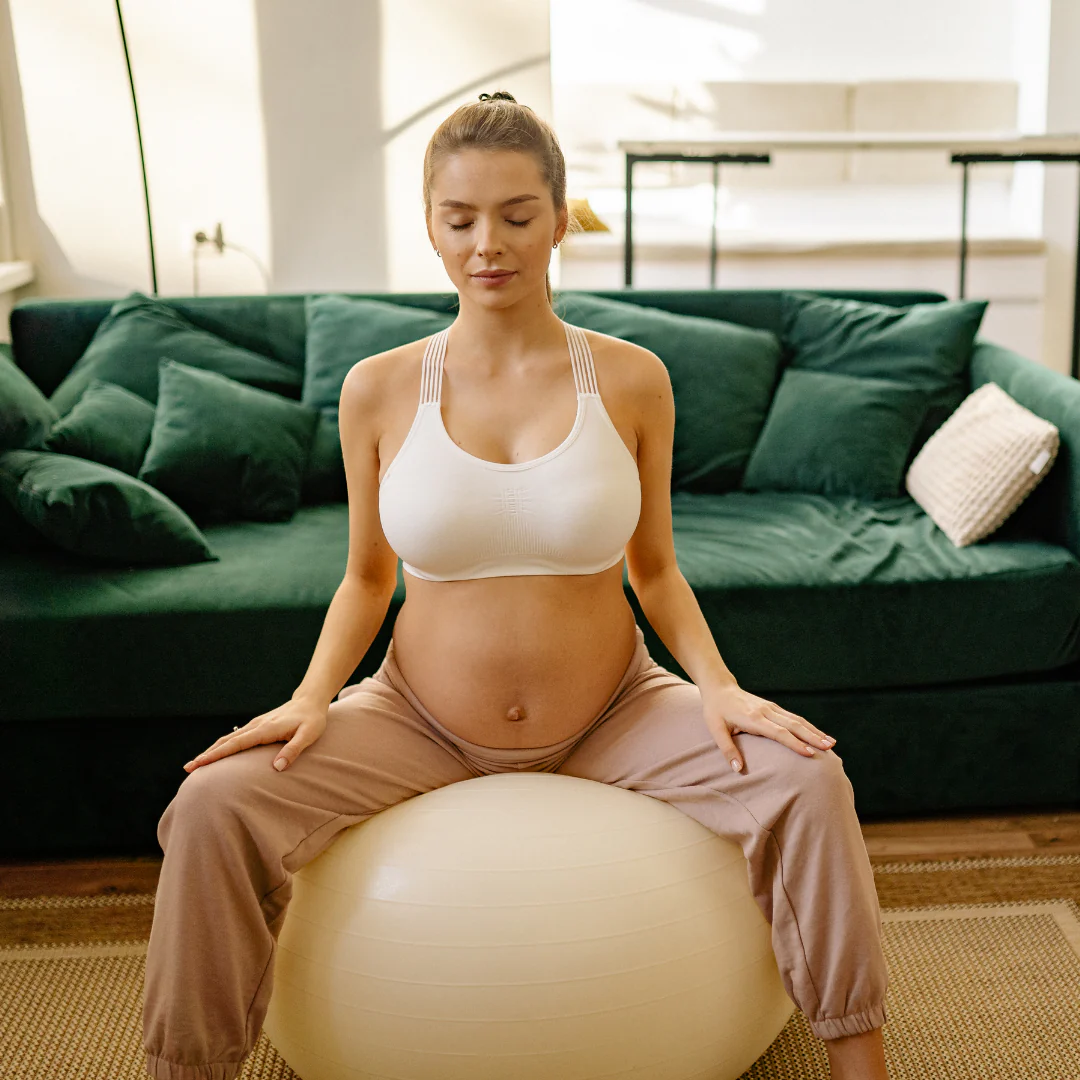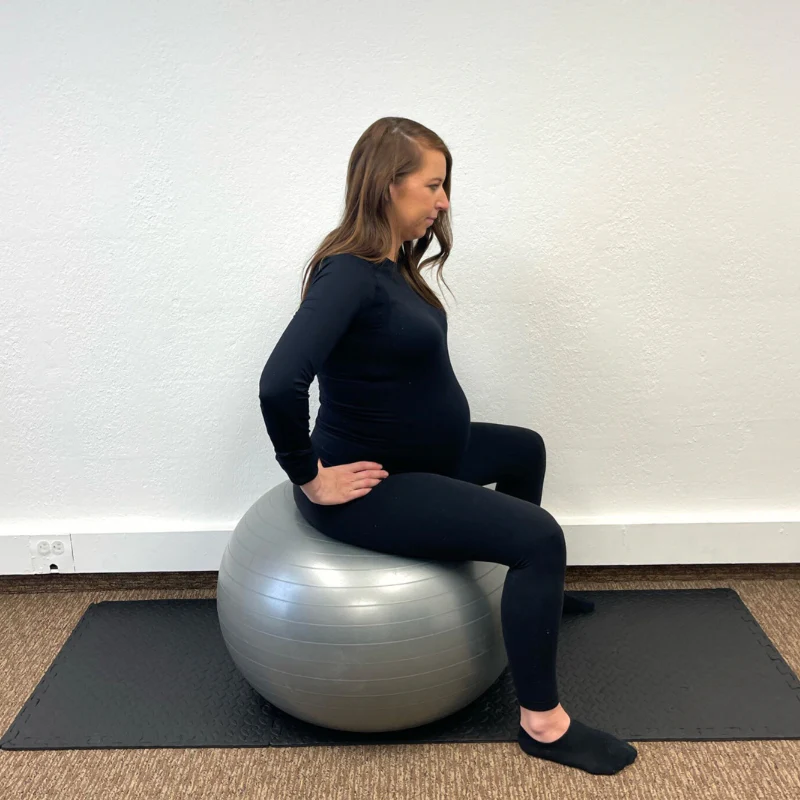I. Introduction

Pregnancy is a remarkable journey that brings about numerous physical and emotional changes. It is essential for expecting mothers to maintain their well-being throughout this transformative experience. One way to support a healthy pregnancy is through the practice of yoga ball exercises. These exercises offer a range of benefits, aiding in physical comfort, promoting relaxation, and preparing the body for labor and delivery. Furthermore, it is crucial to recognize the significance of safe and effective prenatal workouts, ensuring the well-being of both the mother and the growing fetus.
II. Safety Precautions and Guidelines
A. Consulting with a healthcare provider before starting yoga ball exercises
Before incorporating any new exercise routine into their prenatal care, expecting mothers should consult with their healthcare provider. This discussion is vital to ensure that the chosen exercises are suitable for the specific needs and health conditions of the mother and her baby. Healthcare professionals can offer valuable guidance, personalized recommendations, and any necessary precautions.
B. Proper posture and positioning for maximum safety
When engaging in yoga ball exercises during pregnancy, proper posture and positioning are of utmost importance. Maintaining correct alignment and posture while using the yoga ball can help prevent strain or injury. It is crucial to focus on stability, keeping the body balanced and centered to foster a safe and effective workout. Learning the correct techniques from a qualified prenatal fitness instructor can help expecting mothers achieve optimal posture and positioning.
C. Importance of listening to your body’s limits
Pregnancy brings varying levels of physical comfort and discomfort for different women. As such, it is crucial for expectant mothers to listen to their bodies and respect their limits during yoga ball exercises. Some movements or positions may not feel comfortable, and it is essential to recognize and honor these sensations. By being attuned to their bodies, pregnant women can modify exercises as needed, ensuring a safe and comfortable workout experience.
As the journey of pregnancy unfolds, the utilization of yoga ball exercises offers expecting mothers a means to support their physical and emotional wellness. With a focus on safety and mindfulness, these exercises can contribute to a positive and nurturing experience for both the mother and the growing baby.
III. Gentle Stretching and Relaxation

A. Hip circles and gentle figure-eight movements to reduce lower back discomfort
As your baby grows, your body undergoes significant changes to support the increasing weight. This can often lead to lower back discomfort and strain. Engaging in gentle hip circles and figure-eight movements can help to alleviate this discomfort by loosening and stretching the muscles surrounding the lower back and hips.
To perform hip circles, stand with your feet hip-width apart and gently rotate your hips in a circular motion, first clockwise and then counter-clockwise. This movement can help to increase blood flow to the area and improve flexibility, providing relief from tension and discomfort.
Similarly, gentle figure-eight movements involve moving your hips in a fluid, figure-eight pattern, allowing for a gentle release of tension and a soothing stretch for the lower back. Incorporating these movements into your daily routine can help to alleviate lower back discomfort and enhance your overall sense of well-being during pregnancy.
B. Deep breathing techniques to promote relaxation and reduce stress
The profound changes taking place in your body during pregnancy can often lead to feelings of stress and anxiety. Practicing deep breathing techniques can be incredibly beneficial in promoting relaxation and reducing stress, allowing you to find moments of calm amidst the whirlwind of emotions and physical changes.
One effective deep breathing exercise is diaphragmatic breathing, also known as belly breathing. To practice this technique, sit or lie down in a comfortable position and place one hand on your chest and the other on your abdomen. Inhale deeply through your nose, allowing your abdomen to rise as you fill your lungs with air. Exhale slowly through your mouth, feeling your abdomen fall as you release the breath.
Repeat this deep breathing exercise for several minutes, focusing on the rhythm of your breath and allowing any tension or stress to melt away with each exhalation. Deep breathing can be practiced anytime and anywhere, serving as a valuable tool for relaxation and stress reduction throughout your pregnancy.
C. Gentle spinal extensions to relieve tension
As your body adjusts to the demands of pregnancy, you may experience tension and discomfort in your spine. Gentle spinal extensions can help to alleviate this tension by lengthening and stretching the muscles along your spine, promoting flexibility and relieving discomfort.
To perform a gentle spinal extension, stand with your feet hip-width apart and place your hands on your lower back for support. Inhale deeply as you gently arch your spine, lifting your chest and gaze towards the ceiling. Hold this gentle backbend for a few breaths, feeling the stretch along your spine, and then exhale as you release back to a neutral position.
Incorporating gentle spinal extensions into your daily routine can help to relieve tension and discomfort in your spine, promoting greater ease and mobility as your body undergoes the remarkable changes of pregnancy.
IV. Core and Pelvic Floor Strengthening
A. Pelvic tilts and circles to maintain stability and strengthen the pelvic floor
Maintaining a strong and stable core is essential during pregnancy, providing support for your growing baby and helping to prevent discomfort and strain. Pelvic tilts and circles are effective exercises for maintaining stability and strengthening the pelvic floor, which plays a crucial role in childbirth and postpartum recovery.
To perform pelvic tilts, lie on your back with your knees bent and feet flat on the floor. Inhale deeply, and as you exhale, engage your abdominal muscles to gently press your lower back into the floor. Hold this position for a few breaths, feeling the activation of your pelvic floor muscles, and then release back to a neutral position.
Additionally, incorporating gentle pelvic circles into your routine can further strengthen and stabilize the pelvic floor. While lying on your back, slowly rotate your pelvis in a circular motion, focusing on engaging the muscles of the pelvic floor and maintaining stability throughout the movement.
B. Modified planks and leg lifts for core strength without strain
Maintaining core strength and stability is important during pregnancy, but traditional core exercises such as full planks and sit-ups may not be suitable as your body changes. Modified planks and leg lifts are gentle yet effective alternatives for building core strength without strain.
To perform a modified plank, start in a kneeling position with your hands on the floor beneath your shoulders. Extend one leg back, followed by the other, to create a straight line from your head to your knees. Hold this position for a few breaths, engaging your core muscles, and then release back to the starting position.
Leg lifts can also help to strengthen the core without placing undue pressure on the abdomen. While lying on your side, support your head with one hand and place the other hand on the floor in front of you for balance. Inhale as you lift your top leg a few inches off the ground, and exhale as you lower it back down with control. Repeat this movement several times, focusing on engaging the muscles of your core and pelvic floor.
C. Squats and deep pelvic stretches to prepare for labor
Preparing your body for the demands of labor and childbirth is an important aspect of prenatal fitness. Squats and deep pelvic stretches can help to strengthen the muscles required for labor and delivery, while also promoting flexibility and ease of movement.
Squats are an excellent exercise for building lower body strength and mobility. To perform a squat, stand with your feet slightly wider than hip-width apart and lower your body down as if you were sitting back into a chair. Keep your chest lifted and your weight in your heels, and then press through your heels to return to a standing position. Incorporating squats into your routine can help to strengthen the muscles of your legs, hips, and pelvis, preparing your body for the physical challenges of childbirth.
In addition to squats, deep pelvic stretches can also be beneficial for preparing your body for labor. One effective stretch is the butterfly stretch, which involves sitting on the floor with the soles of your feet pressed together and gently pressing your knees towards the ground. This stretch can help to open and release tension in the hips and pelvis, promoting greater comfort and mobility as you approach childbirth.
V. Balance and Stability Exercises
A. Sitting or kneeling on the yoga ball for improved balance
Yoga balls, also known as stability balls or exercise balls, can be a valuable tool for improving balance and stability during pregnancy. Sitting or kneeling on a yoga ball engages the core muscles, as well as the stabilizing muscles in the legs and hips, to maintain equilibrium. The gentle, yet constant, adjustments required to stay balanced on the ball can help to strengthen these muscles and improve overall stability.
To use a yoga ball for improved balance, start by sitting on the ball with your feet flat on the floor. Engage your core muscles and experiment with gently shifting your weight from side to side or front to back to maintain your balance. As you become more comfortable, you can progress to kneeling on the ball, which further challenges your stability and strengthens the muscles required for balance.
Incorporating yoga ball exercises into your daily routine can help to enhance balance and stability, providing a valuable foundation for navigating the physical changes of pregnancy.
B. Toe taps and hip swings to enhance stability and coordination
Toe taps and hip swings are simple yet effective exercises for enhancing stability and coordination. These movements engage the muscles of the legs and hips, promoting balance and strength that can be particularly beneficial during pregnancy.
To perform toe taps, stand facing a sturdy surface such as a wall or countertop for support. Lift one foot off the ground and gently tap your toes in front of you, alternating between legs. This exercise challenges your stability and coordination while also engaging the muscles of the lower body.
Hip swings involve standing with a stable support nearby and gently swinging one leg from side to side, keeping your core engaged for stability. This movement helps to strengthen the muscles of the hips and pelvis, improving balance and coordination.
Incorporating toe taps and hip swings into your exercise routine can help to enhance stability and coordination, providing valuable support for your body as it undergoes the changes of pregnancy.
C. The use of the yoga ball for gentle support during standing exercises
In addition to sitting and kneeling exercises, the yoga ball can also provide gentle support during standing exercises to improve balance and stability. Using the yoga ball as a support can help to alleviate pressure on the lower back and pelvis, while also engaging the muscles required for maintaining balance.
A simple exercise to try is using the yoga ball as a support while performing squats. Stand with the yoga ball between your lower back and a wall, and as you lower into a squat position, use the ball for stability and support. This exercise engages the muscles of the legs and core while providing gentle assistance for balance and stability.
Incorporating the yoga ball into standing exercises can help to improve balance and stability while also providing valuable support for the changing needs of your body during pregnancy.



